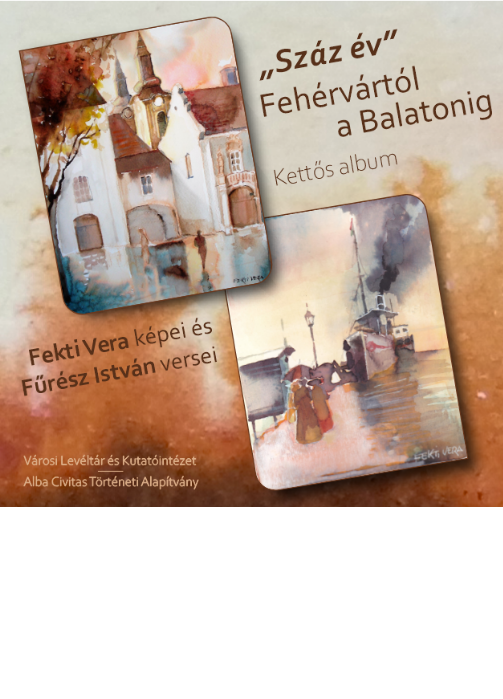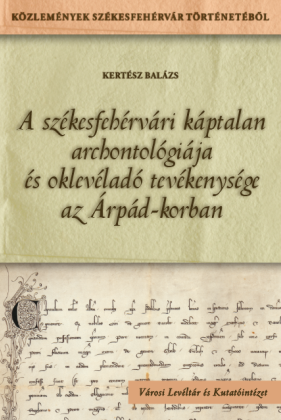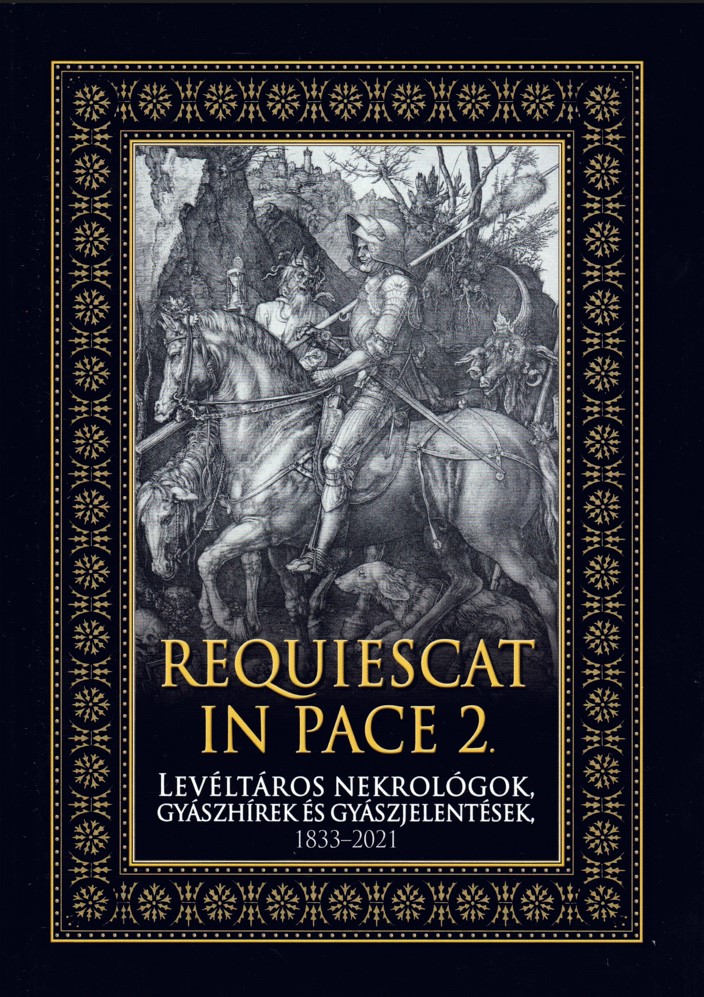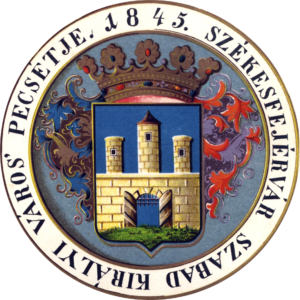
Kiadó: Városi Levéltár és Kutatóintézet
Szerző: Zsoldos Attila–Thoroczkay Gábor–Kiss Gergely
Székesfehérvár, 2016
Megvásárolható:
Kartonált kiadás: 6500 Ft
Kemény táblás: 7500 Ft
Előszó:
A várostörténet első monografikus igényű összefoglalója Károly János prépost, címzetes püspök nevéhez kötődik. Fejér megye története című műve, amit eredetileg három kötetre tervezett, utóbb öt kötetre bővült, 1896 és 1904 között látott napvilágot. E művének második kötete tartalmazza Székesfehérvár első történeti összefoglalóját. A dualizmus korában a várostörténetírás másik jelentős művelője, Lauschmann Gyula számos írása mellett 1913-ra befejezte Székesfehérvár története című több kötetes kéziratát. Lauschmann munkájának kiadását az 1920-as években megkezdték, de csak a nyomdai előkészítés fázisáig jutottak. Ezt követően kiadása hosszú időre végképp lekerült a napirendről. Az utóbb több példányban legépelt kéziratot azonban évtizedeken keresztül használták a várostörténet kutatói.
Székesfehérvár múltjának feltárása fontos feladata intézményünknek. E szellemben jelentette meg a városi levéltár nem sokkal újjáalakulását követően Lauschmann Gyula Székesfehérvár története című munkáját. A négy kötetes mű 1993 és 1996 között jelent meg, s a következő évben új, javított kiadás is készült. A nagy érdeklődést tapasztalva felmerült egy új, korszerű várostörténeti összefoglaló munka előkészítésének szükségessége. A 2000-es évek elején indult el az a közös gondolkodás és munka, amelynek célja egy új, korszerű, XXI. századi kutatási módszereken és új kutatási eredményeken alapuló, tudományos, összefoglaló mű megírása volt a konferenciakötetek, tanulmányok és forrásközlések mellett.
Jelen monográfia egy új, Székesfehérvár történetét összefoglaló sorozat első kötete, mely az ország egyik központjának, az Árpád-kori Alba Civitasnak történetét tárja elénk. E gazdagon illusztrált kötet remélhetőleg nem csupán a szakmai közösség és a történelem iránt érdeklődők, de a Fehérvárhoz kötődők érdeklődését is elnyeri. A kiadvány elkészülte az Árpád-ház programhoz kapcsolódik. A következő kötet – Székesfehérvár a késő középkorban –, amely a város történetét az oszmán-török elfoglalásig mutatja be, szintén e program részeként valósul meg.
The history of Székesfehérvár in the Árpádian period
By Attila Zsoldos, Gábor Thoroczkay, and Gergely Kiss.
Székesfehérvár: Városi Levéltár és Kutatóintézet, 2016. 365 pp.
In November 1490, after having captured the town of Székesfehérvár as part of the campaign he had launched in order to acquire the Hungarian crown, the king of the Romans, Maximilian I recounted the events of the conflict in a pronouncement that was highly propagandistic in nature. In his account, he referred to the town as the capital and strongest town of Hungary (“la principalle et plusforte ville dungrie”). Without throwing into question the merits and might of Maximilian’s military, as it so happens, in the late Middle Ages Székesfehérvár was not considered the capital of Hungary, the ruler’s claim notwithstanding. Indeed, it was not even considered a particularly well-fortified settlement. The town was significant at the time first and foremost because it was the site of coronations. Thus, as was by then established Hungarian tradition, a ruler was only regarded as legitimate if he had been crowned in the basilica in Székesfehérvár, the royal church which had been founded by the first Hungarian king, Saint Stephen of Hungary, and which was under the direct authority of the Apostolic See. The prestige of the town rested not simply on the role it played during the reign of Saint Stephen, but also on the acts of his descendants and successors, who added to its fame. Thus, it is hardly surprising that the town enjoyed the most prominence under the rulers of the Árpádian dynasty, i.e. in the period between 1000 and 1301. Hungarian scholarship has something of an outstanding debt, in that it has failed to devote sufficient attention to the history of the town during the Árpádian period. Attempts have been made over the course of the past few centuries to offer a narrative of the history of the town in the Middle Ages, i.e. from the earliest times until the Ottoman occupation in 1543. These forays, however, do not bear comparison with the current undertaking of Attila Zsoldos and his co-authors, neither from the perspective of their methodologies nor from the perspective of their use of sources. Fejér vármegye története [The history of Fejér County], a several-volume narrative written by János Károly at the end of the nineteenth century, focuses on Fejér County. Only the second volume is dedicated to the county seat, Székesfehérvár. Károly’s narrative thus focuses on the history of a region, in which the history of the town is only a little more than a chapter. Gyula Lauschmann’s Székesfehérvár története [The history of Székesfehérvár], which was written in the first half of the twentieth century, focuses exclusively on Székesfehérvár, but in the narrative of the history of this town, which obviously stretches over the better part of a millennium, only a small section is devoted to the Árpádian period. The work of Attila Zsoldos, who is an internationally renowned scholar of the Árpádian period, situates the history of the town under the Árpádian dynasty in the larger political history of the age. Zsoldos adopts a methodology, in his study of the first three centuries of the town’s history, which breaks with the accepted approaches to urban history in Hungary. Only two of the five chapters are devoted to a chronological presentation of the events which influenced the development of the settlement and which can be reconstructed on the basis of the available written sources. Zsoldos narrates these events like a chronicler presenting the history of the town. He divides his linear account of the history of the town, which relies strictly on written sources, into two parts. The pivotal moment comes in 1241 with the Mongol invasion, which constituted an important turn in the development of Székesfehérvár. As a consequence of the Mongol invasion, which swept aside almost everything in its path, the privileges which had been enjoyed by the people from Western Europe who had settled in the suburbs (“suburbium”) and moved to the walled town (“castrum”), first and foremost Walloons (the so-called Latins) became privileges of the entire town. The two narrative parts of the book are found between four chapters which focus on specific questions in the history of the town in the Árpádian period. In these chapters, Zsoldos sheds the garb of chronicler and dons instead the robes of the researcher, examining in each a question that was decisive from the perspective of the development of the town. In the first chapter (“The Beginning”), he attempts to identify the geographical, economic, and historical factors which played a role in the decision to found a town on a site at which there had been no earlier settlements in Antiquity. Zsoldos places considerable emphasis on the fact that, at the time of the Hungarian Conquest, the area around what would later become the town was part of the tribal occupation territories of the Árpáds. In connection with this, the question of the origins of the name of the town, which literally means “white castle” and which was used very early on, comes up. Zsoldos takes time in this chapter to refute myths concerning the town, for instance the notion that Grand Prince Géza, Saint Stephen’s father, was buried in Fehérvár. Zsoldos also explains in this chapter the essential (in his assessment) difference between the center of castellany, which came to constitute the inner town of the medieval town, and the center of principality, a term which is more generally known. The third chapter (“The Capital”) examines the ways in which contemporaries considered Székesfehérvár the capital in the eleventh, twelfth, thirteenth, and fourteenth centuries. Unquestionably the most important factor from this perspective was the fact that the town was the holy center of the Árpáds, since it was home to the Basilica of the Virgin Mary and the Provostry, both of which had been founded by the first Hungarian Christian king. Two younger scholars, Gábor Thoroczkay and Gergely Kiss, present the history of the royal basilica, its privileges, and its estates. The town was important in the Árpádian period not simply as a religious center, but also as the site of coronations and royal burials. Furthermore, some important institutions functioned from the outset in Székesfehérvár, and this added to the role of the town as a seat. These institutions included the royal assizes of Fehérvár sometime around 15 August, which were first held in the twelfth century. At the royal assizes it was the ruler himself who adjudicated on the matters of his subjects. While the king saw to his responsibilities in the administration of justice, inevitably events of national significance arose which created opportunities for the passage of new laws, which the ruler did with the cooperation of his prelates and notabilities. Thus, Székesfehérvár also served as the site of the “congregatio generalis”, a form of assembly which was the precursor to the later national assemblies. As the “loca credibilia”, the cathedral chapter in Székesfehérvár continued to enjoy national jurisdiction, which makes it even more likely that the royal archive was also held in the cathedral chapter. In contrast with the third part, the fourth, entitled “The Town of the Bourgeoisie,” examines not what the town was able to give to the kingdom, but what it was able to give its own denizens, first and foremost the settlers from Western Europe, who must have been present, alongside the center of castellany, as of the middle of the eleventh century. It is worth asking how the privileges of the Latins became the privileges of an entire community, in particular since this later served as a kind of legal precedent in other towns of the Hungarian kingdom. The more interesting question in the scholarship, however, is not which rights and privileges the people who came to and lived in the town were able to obtain and assert in the course of time, but rather whether or not the contents of the original charter, which did not survive, can be determined on the basis of the privileges that were later confirmed or strengthened. Zsoldos carefully examines whether the denizens of the town who lived either in its suburbs or in various parts of the inner town actually were under the jurisdiction of the town or rather were under the authority of the chapter or in some cases some other Church institution. The privileges which gave economic advantages to people involved in commerce and crafts were an important subset of the privileges of the town burghers, as were the privileges which applied to the properties they acquired with the wealth they had obtained. The last chapter of the book, the title of which is not terribly informative (“Fehérvár at the End of the Árpádian period”), presents the topography of the town in the eleventh, twelfth, and thirteenth centuries. Zsoldos moves from the “castrum”, that is the center of the settlement in the direction of the suburbs, which means that he moves from the parts of the town about which we have the most information and sources to areas on which we have almost no information at all. He redraws the map of the town in the Middle Ages, since he persuasively shows that the suburb given the name Nova villa was connected to the town not from the south (as has been contended in the secondary literature). Rather, it joined the area of the earliest “Budai suburb” from the south. Zsoldos takes into consideration the religious, administrative, and economic institutions and public spaces of the settlement, and on the basis of the number of office-holders and the order in which the various suburbs figure in the documents issued by the town in the late Middle Ages, he establishes a hierarchy among the various parts of the settlement. This part of the inquiry unquestionably goes beyond the history of the town in the Árpádian period. Zsoldos, Thoroczkay and Kiss have placed the genre of the urban history monograph on new foundations. Moving from national political events, the defining social changes of the period, the general historical trends and tendencies of the Árpádian period, and the general sources on which historical inquiries have relied, they arrive at the distinctive features of the town of Fehérvár itself. The chronologically arranged history of events and the interpretive sections of the narrative are complemented with relatively substantial summaries in German and English, which follow the structures of the chapters and subchapters. The book, which is indeed impressive as a work of fine scholarship, also contains an array of arresting visual materials, and familiar illustrations are presented to the reader in images of very high quality.
Renáta Skorka
Hungarian Academy of Sciences







